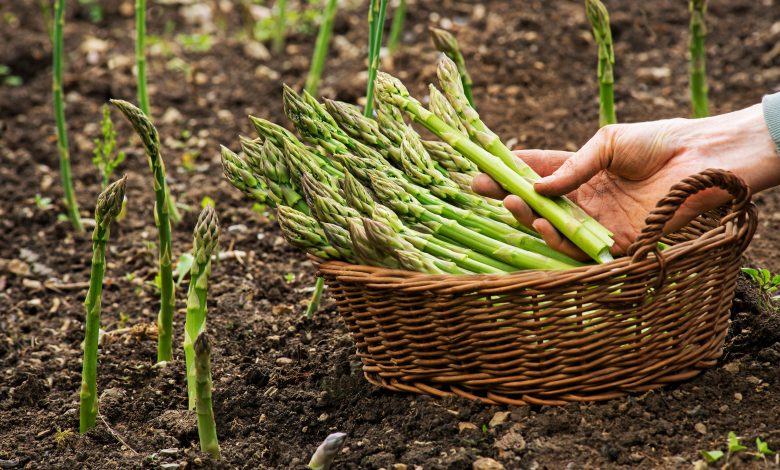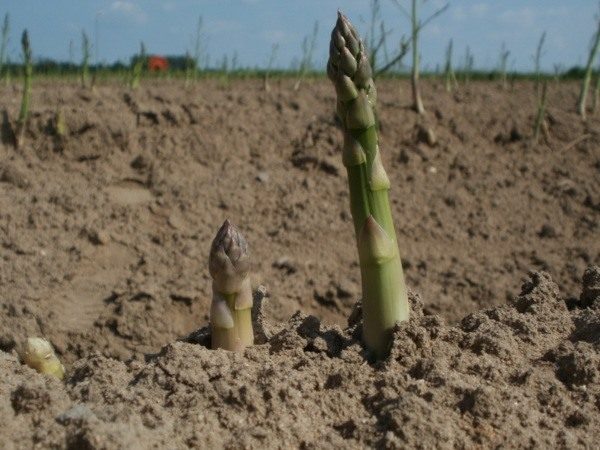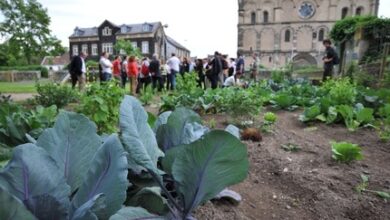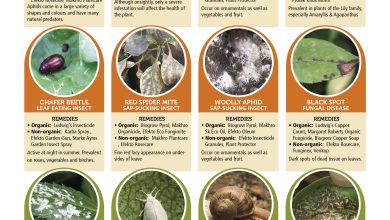How to grow Asparagus step by step: planting, fertilizer, harvest and more

Hello Agrohuerters, today we are going to see for the first time how to grow asparagus organically and all the information you need to know regarding this crop.

The asparagus plant
Asparagus (Asparagus officinalis) is a herbaceous perennial plant. It draws attention for its light foliage, it is a very pretty plant even for decoration. It is one of the vegetables for which there is documentary evidence of its consumption since ancient times.
It is a crop that you can have for up to 10 years giving production. What is consumed are the so-called shoots, which are the early stems that come out of the ground. Asparagus can be grown both in a gardener and on a plot, it is a very curious crop due to its growth form.
How to grow asparagus step by step
To have it in your garden follow these steps:
asparagus sowing
If you decide to sow, you have to buy the seeds and sow them in spring, covering the seeds with a few millimeters of soil on top and watering abundantly. The space to be left between seeds is about 30-35 cm, several are planted and then the weakest plants are removed. The following spring the crowns are collected (which are the roots attached to a small sphere at the time of vegetative rest of the plant).
asparagus transplant
If we are going to transplant, whether it is because we have bought the crowns or we have obtained them by planting, it must be done in the following way: first cut the roots a little. In the cultivation on land or plot, it is recommended to make ridges of about 8-10 cm in height, the crowns are placed in the center of the ridge at a distance of about 40 cm from each other and now they must be covered and compacted slightly.
In the autumn after planting, the stems that have grown about 10 cm must be cut and the ground is leveled, in the spring after planting they can begin to produce the first asparagus, but they must not be cut, because they have to be wait until the third year.
Asparagus crop cycle
After these 3 years, it will be harvested from late spring to early summer. Each asparagus can produce up to 9 asparagus.
In this image you can see the growing cycle:

Climate needed to grow asparagus
Asparagus is quite demanding in terms of temperatures, it is very sensitive to sudden changes. The suitable temperature range for its growth is from 18 to 25ºC. As for light, it is essential for green asparagus to be exposed to the sun, because in this way it acquires this characteristic colour. They must always be grown in places where the wind is not a problem.
I usually
The asparagus needs a loose soil, rather sandy type so that it is well drained. Clay soils do not support them. The pH of the soil has to tend to basic between 7-8 is adequate. It is recommended to keep the soil free of weeds during the cycle of this crop, for which a mulch can be used.
Pass
Before carrying out the transplant in autumn, the land must be adequately fertilized, manure or earthworm humus works very well for this crop. From the second year, at the beginning of spring (fertilizer is added in March) and as the years go by, this operation will be repeated.
Irrigation
Irrigation during asparagus cultivation is very important according to the state of the crop. If they have just been planted, they must be kept moist for a few weeks. When the plant is developing the aerial part, it is necessary to be generous with the irrigation but without flooding, since its needs increase with growth. During the rest of the cycle, it is irrigated by decreasing the amount of water.
When and how to harvest asparagus
Once planted, asparagus produce in the second or third year, depending on the variety. It will be harvested for about 5-6 weeks in late spring. It begins should be done when they measure from 10 to 15 cm. At the beginning of summer it is convenient to stop collecting and for them to form leaves, so that in this way they accumulate the necessary reserves for the next year.
As for crop rotation, it is necessary to avoid growing asparagus where carrots, beets, alfalfa or potatoes have previously been grown. Asparagus works very well in association with chives and garlic to prevent diseases. In association with broad bean, pea and bean, the soil is more enriched, also improving its structure, these plants make each other grow stronger and healthier and can even increase the harvest a little.
Agrohuerters one last recommendation is that you consume the asparagus that you collect as soon as possible, because if they do not lose many properties and spoil immediately, it is difficult to keep them stored for a long time. Until next time!




